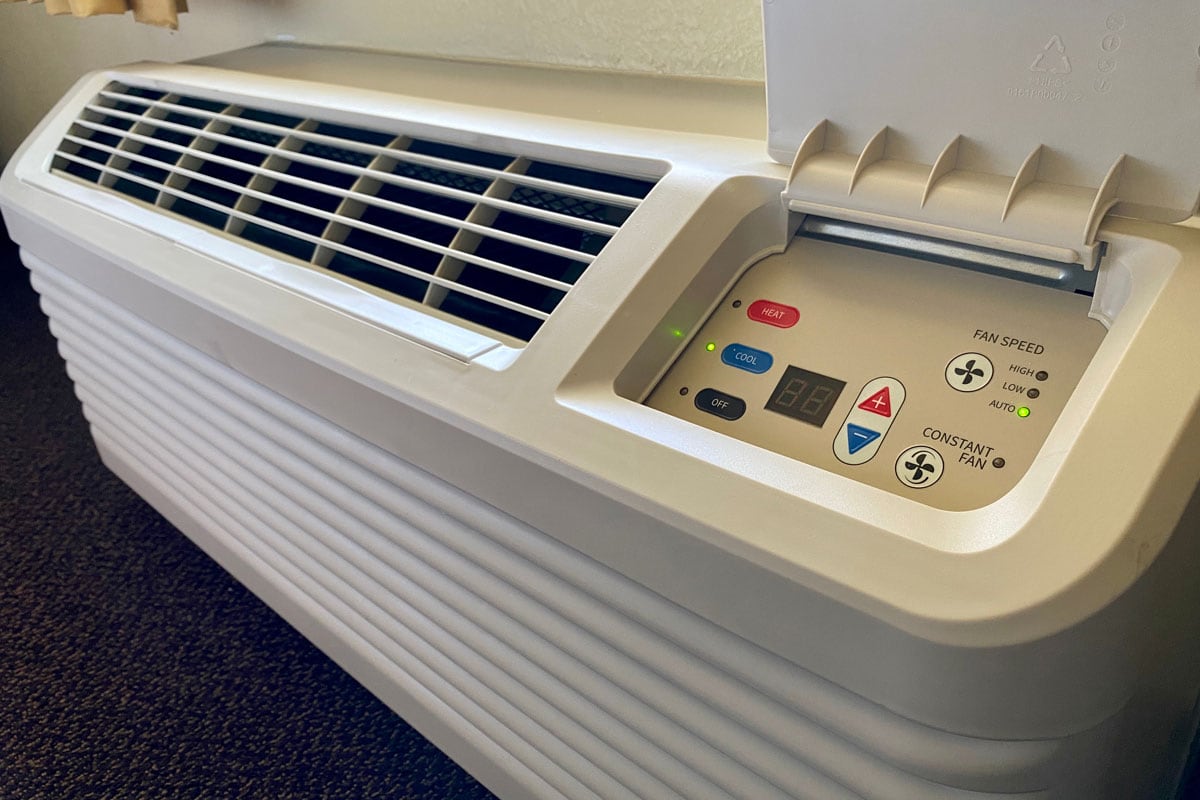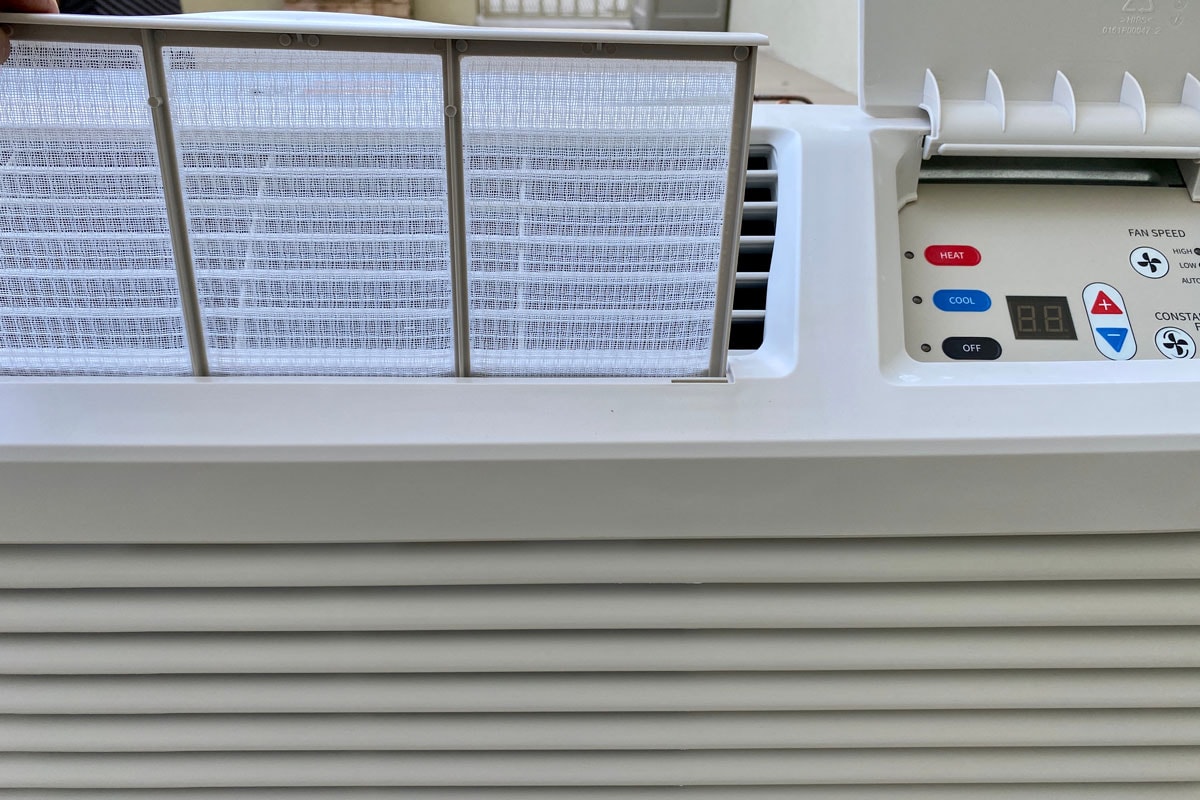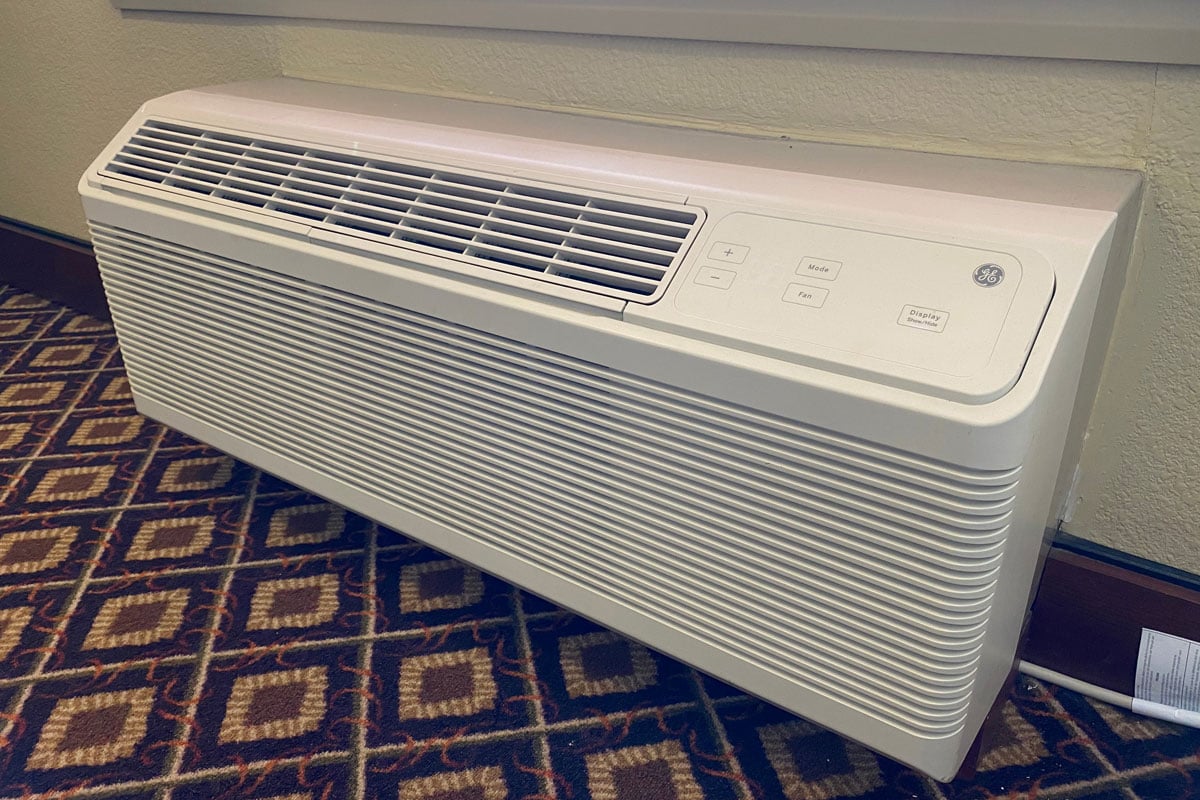We frequently encounter PTACS coolers in workplaces, medical facilities, and other public structures. They are independent air conditioning units with a heater function that takes up space below windows. If you're one of those who use a PTAC unit in your home, and you're wondering if it can be recharged, you're in luck! We consulted specialists on this subject to provide you with the best answer.
The answer is yes. If a PTAC unit isn't effectively cooling your space, you need to recharge the unit with more refrigerant. This refrigerant is what enables the airflow to chill inside the appliance.
Now, your next concern may be how to recharge the PTAC unit with a refrigerant. Continue reading as we go over what you need to accomplish. We'll also address some other questions you may have.

How To Fill PTAC Unit With Refrigerant
To begin with, unplug the unit from the room's socket and remove it from the window. To absorb potential water leaks, spread out a towel and set the appliance on it.
Next, on the rear panel of the equipment case, use a screwdriver to remove the screws. To reach the interior parts of the machine, detach the back panel from the casing. Look inside the appliance for the compressor, which is a metal cylinder with two tubes coming out of it.
In addition, attach your refrigerant can to the service valve that exits the compressor. The bigger of the two valves is the service valve and is of the can's hose end.

Furthermore, join the other hose to the compressor's smaller valve. Then, turn the power conditioning unit on and let it charge. The required amount of refrigerant will automatically fill the appliance. The device will be charging completely when cool air starts to emerge from it.
Lastly, take out the refrigerant can. Put back the metal casing in the rear of the unit by installing its screws and place it back in the window.
Watch this video for a guide on how to charge PTAC with refrigerant:
Which Refrigerant Is Used for PTAC units?
R-22, which has long been utilized as a refrigerant for cooling systems, is the typical refrigerant used by PTAC units.
However, the United States Environmental Protection Agency decreed that the production of R-22 refrigerants must cease. Unless created before 2010, it couldn't even be bought or sold. The cause of this has been attributed to environmental effects like ozone depletion.
R410A (sometimes called Puron) is the R22 substitute. The PTAC makers who remained in business modified their current models to incorporate it. The mixture doesn't contain any chlorine, making it less damaging to the ecosystem while still having the same cooling properties as R22.
Puron-powered systems are also known to be more reliable, comfortable, and economical. They also provide higher air quality. Unfortunately, it cannot be used in systems that previously ran on R22, necessitating an update or replacement.
Can You Set Up A PTAC Unit Yourself?

Perhaps you can do all of this on your own with no issues. But hiring skilled experts to assist you with PTAC setup could ultimately save you time, hassle, and perhaps even money. It can reduce the possibility of harm coming to your home or the PTAC unit itself.
If you're confident, however, to DIY, here are the steps to install a PTAC unit:
Consider the Location
The location is the first factor that needs to be considered. Location is important because every place has its difficulties. There might be no problems if it is simply a replacement. To ensure that the unit's functionality is not compromised, a suitable location must be selected if the installation is being done for the first time.
Guarantee Installation Security
An anchored, stable installation will enhance performance and lengthen the lifespan of a PTAC unit. The PTAC unit should be framed with strong, substantial wood studs. To prevent the PTAC unit from being overstressed by the weight of the wall or window, install a lintel over it.
Check Electrical Power and Levels
Check to see if the wiring and outlet can withstand the voltage needed by the system. Never hesitate to call a licensed electrician if you aren't an expert yourself to manage the wiring safely and effectively. Reducing the likelihood of fire dangers and other electrical problems will be well worth the extra expense, even if it is paid for upfront.
Make the PTAC Unit Weatherproof
It's critical to ensure that the outside components are completely sealed because the PTAC unit's protruding portion will be exposed to the elements. The casing of the device will typically be suitably airtightly sealed by specific caulking.
To discover whether there is any additional guidance for weather sealing the appliance, you can double-check the product instruction manual or maker guidelines.
Ensure Nothing Is Missed
It is always worthwhile to confirm that everything was handled right when setting up a PTAC unit.
- Ensure that the PTAC unit is safe.
- Verify that it is completely level.
- Check to make sure you didn't damage the device during setup.
- Confirm that no frames, trim, drapes, pieces of furniture, or other obstructions are blocking the vents. Airflow restrictions will reduce the efficiency of a PTAC unit.
Selecting the Ideal PTAC Unit

The Energy Efficiency Ratio, cooling amps, and British Thermal Units (BTUs) should be taken into account when choosing a PTAC unit.
When one pound of water is heated by one degree Fahrenheit, there are units of heat called BTUs. The amount of heat that a PTAC system can extract from a space per hour is measured using BTUs. Therefore, it is crucial to consider the size of the space while making a decision.
You must get a certain room's temperature just right to calculate the number of BTUs. BTUs are divided by the amount of energy used to calculate the EER (measured in watts). The larger the number, the more cost- and system-efficient the system is.
Shortly, a PTAC unit with a higher energy efficiency ratio will likely be the more expensive option. In the end, more affordable technologies cover the price difference by saving money on electricity. They are additionally more environmentally beneficial when compared to products having a low EER.
Find this Cooper&Hunter 15,000 BTU PTAC on Amazon.
How frequently should you clean a PTAC unit?

PTACs are self-contained units that are mounted through the outer wall of the building using a wall sleeve of a common size. They are essentially a whole climate control system in a box because they include an evaporator coil, a condensing coil, and a compressor.
PTACs require maintenance and cleaning including coil cleaning, much like any other climate control system to ensure efficiency. All PTAC maker suggests a thorough cleaning at least once annually or more frequently if local conditions require it. In dusty or corrosive areas such as those close to construction sites or salt water, cleaning needs to be done more regularly up to four times per year.
Along with the PTAC's filters, drain channels, the base pan, the coils and other crucial parts of PTACS must also be completely cleaned.
A fine bristle brush, vacuum or blower, pump spray bottle, and pressure washers, are just a few of the tools being utilized to clean the coils of the PTAC. The unit is often pulled out of its wall sleeve and transported to a remote work area where cleaning is done.
The room cannot be used until the PTAC is installed again due to the time-consuming nature of this cleaning operation. Additionally, special caution must be exercised while using hoses, steam cleaners, or pressure washers to prevent overspray on electrical components.
Watch this short yet helpful video about cleaning PTAC units:
In Closing

You should consider a PTAC if your demands for a temperature control solution include an affordable yet efficient appliance that can be mounted securely in an appropriate site on an exterior wall. A lot of air conditioning capacity can be contained in a rather small package that offers you year-round comfort for a modest initial investment and low ongoing operating costs, especially as it can be recharged.
Here are related posts that you might want to read:

